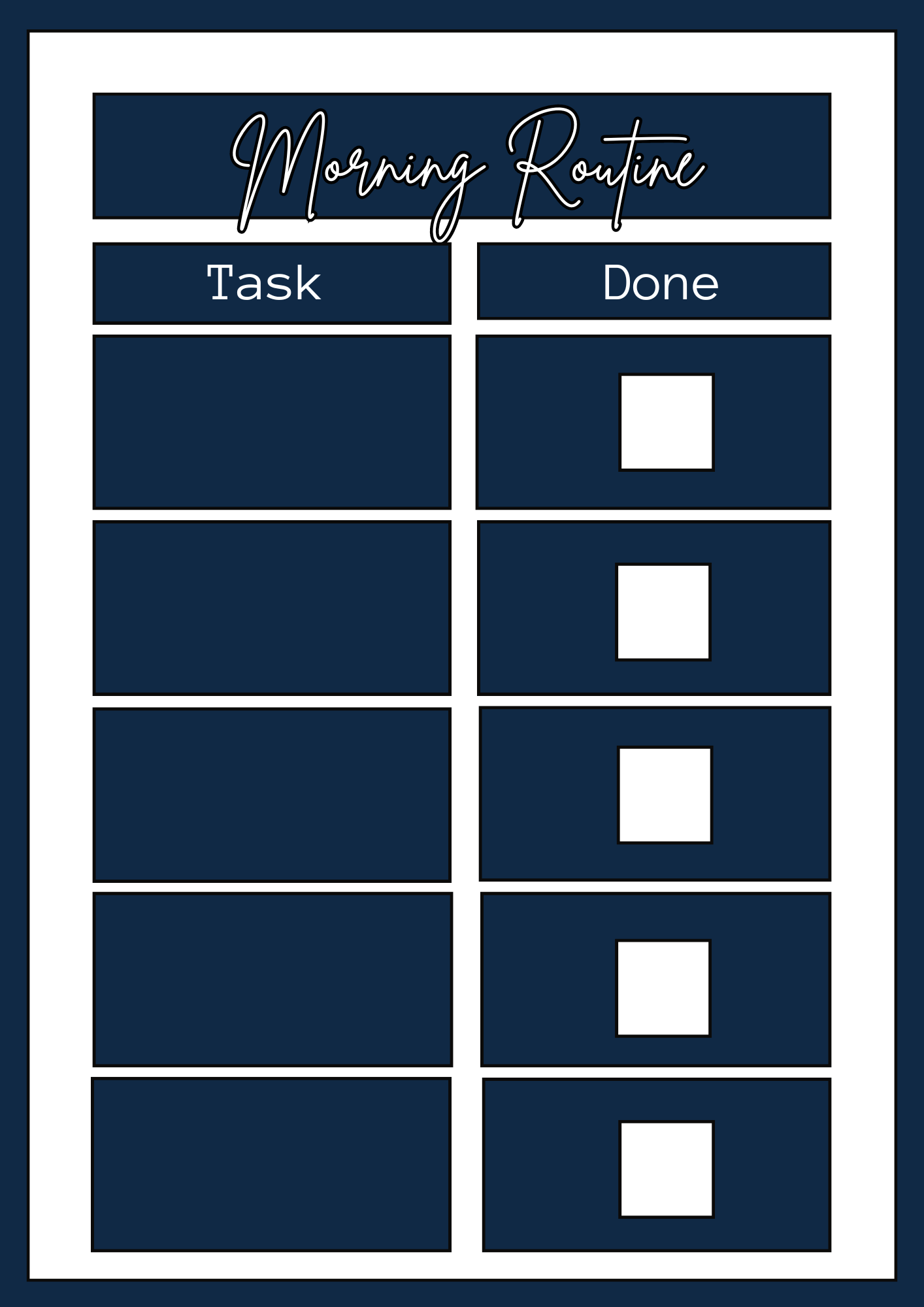Rise & Shine: Morning School Routine for Kids
School Morning Routine
Morning routines can be challenging for parents when the new school year starts. Many kids have trouble transitioning from sleep to wakefulness as it relates to self-regulation skills (Hill, 2022).
Over 50% of parents find that morning routines are the most challenging part of their day when the school year starts, with the top stressors being getting their kids out of bed (42%) and waking them up (39%) (SWNS Staff, 2021).
Challenges with Morning Routine
There are several reasons why your child may struggle with getting up in the morning, such as:
Lack of sleep: Some children are not getting enough sleep due to difficulties falling asleep.
Changes in the circadian rhythm: School schedules can shift a child's circadian rhythm (internal clock), leading to sleep deprivation.
Sensory processing disorder: Some may feel overwhelmed and anxious if a routine or schedule is not in place.
(Hill, 2022; Hopscotch & Harmony, 2019; Summer, 2023)
Ways to Support School Morning Routine
There are various strategies to help your child get out of bed in the morning and complete their routine before school, including:
Natural lighting: Bring your child outside on a sunny day or in a room with the most natural sunlight.
Breakfast with bold textures/flavors: Some foods/drinks with lots of flavors or textures can help stimulate taste buds, such as cold smoothies or crunchy cereal. For more oral input, have your child use a straw when drinking their smoothie, milk, or juice.
Play music: Music with an upbeat rhythm can help move your child's body as they prepare for the day. You can also add a little dance party to motivate your child to get out of bed.
Movement: Implement body movements such as animal walks, swinging, jumping on a trampoline, stretches, and walking to help alert the brain and body.
Provide visuals: Create a schedule with your child that includes pictures to identify what task needs to get done. A visual timer can also help indicate how long a task should take and when to transition to the next task. Below, you will find a visual schedule you can use for your child at home!
Make a consistent routine: Wake up and go to bed at the same time, use the same schedule in the morning, and provide the same breakfast meal.
(Hill 2022; Hopscotch & Harmony, 2019; Summer 2023; Radhakrishnan,2021)
References
Hill, J. (2022). Sensory strategies to help kids start the school day. Harkla. https://harkla.co/blogs/special-needs/before-school-strategies?srsltid=AfmBOorkI2Rnbq95QZBFSIf6_YNWlhI6IPz4flS8BtNfy1GzHs_YXHhW
Hopscotch & Harmony. (2019). 4 ways to set up a morning routine for your sensory child. Hopscotch & Harmony. https://www.hopscotchandharmony.com.au/blog/4-ways-to-set-up-a-morning-routine-for-your-sensory-child
Radhakrishnan, R. (2021). How do i wake up my child for school? 12 effective ways. MedicineNet. https://www.medicinenet.com/how_do_i_wake_up_my_child_for_school/article.htm
Summer, J. (2023). Why is it hard to wake up in the morning?. Sleep Foundation. https://www.sleepfoundation.org/sleep-faqs/why-is-it-so-hard-to-wake-up
SWNS Staff. (2021). Over half of parents agree school day mornings are the most stressful part of the day. SWNS Digital. https://swnsdigital.com/us/2021/08/over-half-of-parents-agree-school-day-mornings-are-the-most-stressful-part-of-the-day/



